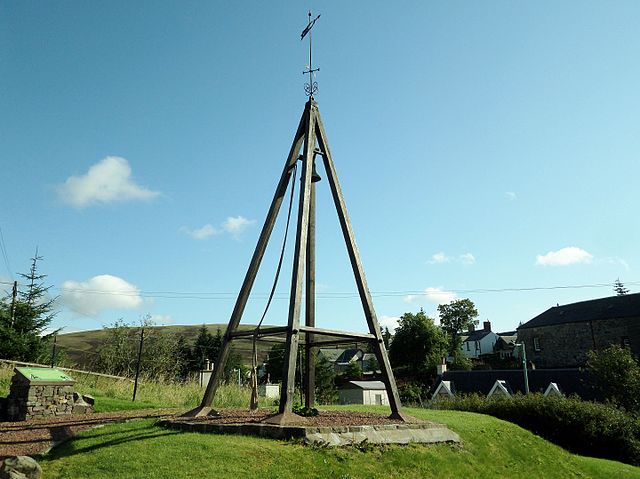The First Curfews

You’re almost certainly familiar with the concept of a curfew. They are restrictions on what you can and cannot do, typically after certain hours. Specifically, curfews typically require the people targeted to return to their homes by a time specified; Merriam-Webster defines the word as a ” regulation enjoining the withdrawal of usually specified persons (such as juveniles or military personnel) from the streets or the closing of business establishments or places of assembly at a stated hour.” Parents use curfews to make sure their kids come home at night without getting into too much trouble; governments often use curfews to help keep the peace during times of unrest. Again, you probably knew all of that already.
Which is weird, because that thing pictured above is also called a curfew — even though you’ve probably never seen one before.
The first curfews date back to the 9th century and were, most likely, ordered by the English king Alfred the Great, who ruled from around 886 to around 899. During his reign, the people of modern-day London were plagued by housefires, and he needed a way to curtail these tragedies. As author William Andrews wrote in 1896, the problem was that “most dwellings, even those of the higher classes, were built, for the greater part, of timber.” People would start fires in their houses to cook, keep warm, etc., and if those fires were left unattended, there was a significant risk that the house itself would ignite. Going to bed with a burning fire was a bad idea, but accidents happen. And these accidents were particularly pernicious, as one housefire could spread to neighboring houses. Entire communities were at risk due to one sleepy person failing to tend to the hearth or fireplace before going to bed.
So King Alfred introduced a new rule: before going to bed, you had to cover your fire. As Andrews explains, “there was a utensil known as the couvre-feu,” a French term for “cover fire.” These items, per Andrews, were “a kind of metal cover, somewhat resembling a shield in form, the use of which was to be thrust over the fire when the bell rang” and were common in the houses of the most wealthy. Other households had pottery versions, like the one seen above, while other families simply swept up the smoldering ashes. But in all cases, the idea was the same: you had to put out your fire before going to bed. The advantage of the couvre-feu was that the flame didn’t need to be fully extinguished; as the Mercury News explains, “the coals could smolder through the night, and when uncovered in the morning could be reignited quickly. The device saved both kindling and labor.” It was a pretty handy device to have.
But not everyone had a couvre-feu and regardless, the simple ownership of such a fire lid wasn’t enough to prevent house fires. So King Alfred, per Andrews, brought a new innovation to his people: a big bell, similar to the one seen below. When the bell rang, those in town were ordered to cover their fires, and constables or the equivalent law enforcement at the time would walk around to ensure that all fires were put out.

Over the years, the name of the device changed from a couvre-feu to, ultimately, a “curfew.” The bell, similarly, became known as a “curfew bell.”
The change from “cover your fires” to “go home or you’ll be arrested” didn’t come for nearly two centuries after the establishment of curfew bells, though. In 1066, William the Conqueror took control of England and tried to maintain that control for the rest of his reign. Per Andrews, “two years after the Battle of Hastings—in 1068—[William] ordered fires to be covered at the ringing of an eight o’clock bell, and the people to retire to rest.” For William, this wasn’t anything new; curfew bells were common in his home state of Normandy. But for the Saxons he had conquered, the curfew bells were not as strictly enforced, perhaps because house fires were less of a concern. But William enforced the 8 PM curfew exactingly on the Saxons — and not to keep the safe from fires. Rather, William the Conqueror used the curfew bells as a pretext — they were a way to keep Saxons inside at night, thereby minimizing the chance of a rebellion. Effectively, William the Conqueror used a fire safety tool to prevent gatherings that put the peace at risk. (And yes, it also helped him maintain power.)
Curfews — the fire cover device — fell out of use as technology and fire safety improved. But the idea that the King could insist you stay home after a time specific remained. As a result, the meaning of the word “curfew” switched to the meaning we use today.
Bonus fact: There was one group of people who were exempt from “cover your fire” curfews: barbers. Per the Mercury News article linked above, “barbers were frequently exempt from covering their fires, in case their skills — the closest thing to medical care most folks ever received — were needed after dark.”
From the Archives: The Secret, Broken Language of Fire Hydrants: They used to have a secret code, but I guess some people forgot and now the code is basically useless.
